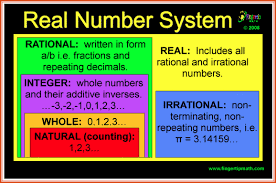Scientific instruments
List of Scientific Instruments.
| Instrument | Use |
|---|---|
| Altimeter | It measures altitudes and is used in aircrafts |
| Ammeter | It measures strength of electric current (in amperes) |
| Anemometer | It measures force and velocity of wind. |
| Audiometer | It measures intensity of sound. |
| Audio - Phone | It is used for improving imperfect sense of hearing. |
| Barograph | It is used for continuous recording of atmospheric pressure. |
| Barometer | It measures atmospheric pressure. |
| Binocular | It is used to view distant objects. |
| Bolometer | It measures heat radiation. |
| Calorimeter | It measures quantity of heat. |
| Carburetor | It is used in an internal combustion engine for charging air with petrol vapour. |
| Instrument | Use |
|---|---|
| Cardiogram | It traces movements of the heart, recorded on a cardiograph. |
| Chronometer | It determines longitude of a place kept onboard ship. |
| Cinematography | It is an instrument used in cinema making to throw on screen and enlarged image of photograph. |
| Crescograph | It measures the growth in plants. |
| Cyclotron | A charged particle accelerator which can accelerate charged particles to high energies. |
| Dynamo | It converts mechanical energy into electrical energy. |
| Dynamometer | It measures electrical power. |
| Electrometer | It measures electricity. |
| Electroscope | It detects presence of an electric charge. |
| Endoscope | It examines internal parts of the body. |
| Eudiometer | Glass tube for measuring volume changes in chemical reactions between gases. |
| Fathometer | It measures the depth of the ocean. |
| Galvanometer | It measures the electric current of low magnitude. |
| Hydrometer | It measures the specific gravity of liquids. |
| Hygrometer | It measures humidity in air. |
| Hydrophone | It measures sound under water. |
| Kymograph | It graphically records physiological movements (Blood pressure and heart beat). |
| Lactometer | It determines the purity of milk. |
| Manometer | It measures the pressure of gases. |
| Mariner's Compass | It is an instrument used by the sailors to determine the direction. |
| Microphone | It converts the sound waves into electrical vibrations and to magnify the sound. |
| Microscope | It is used to obtain magnified view of small objects. |
| Odometer | An instrument by which the distance covered by wheeled vehicles is measured. |
| Phonograph | An instrument for producing sound. |
| Photometer | The instrument compares the luminous intensity of the source of light. |
| Periscope | It is used to view objects above sea level (used in sub - marines). |
| Potentiometer | It is used for comparing electromotive force of cells. |
| Pyrometer | It measures very high temperature. |
| Radar | It is used for detecting the direction and range of an approaching plane by means of radio microwaves. |
| Rain Gauge | An apparatus for recording rainfall at a particular place. |
| Radiometer | It measures the emission of radiant energy. |
| Refractometer | It measures refractive index. |
| Saccharimeter | It measures the amount of sugar in the solution. |
| Seismograph | It measures the intensity of earthquake shocks. |
| Salinometer | It determines salinity of solution. |
| Sextant | This is used by navigators to find the latitude of a place by measuring the elevation above the horizon of the sun or another star. |
| Spectrometer | It is an instrument for measuring the energy distribution of a particular type of radiation. |
| Speedometer | It is an instrument placed in a vehicle to record its speed. |
| Sphygmomanometer | It measures blood pressure. |
| Spherometer | It measures the curvatures of surfaces. |
| Stereoscope | It is used to view two dimensional pictures. |
| Stethoscope | An instrument which is used by the doctors to hear and analyze heart and lung sounds. |
| Stroboscope | It is used to view rapidly moving objects. |
| Tachometer | An instrument used in measuring speeds of aero - planes and motor boots. |
| Teleprinter | This instrument receives and sends typed messages from one place to another. |
| Telescope | It views distant objects in space. |
| Theodolite | It measures horizontal and vertical angles. |
| Thermometer | This instrument is used for the measurement of temperatures. |
| Thermostat | It regulates the temperature at o particular point. |
| Viscometer | It measures the viscosity of liquids. |
| Voltmeter | It measures the electric potential difference between two points. |


Comments
Post a Comment